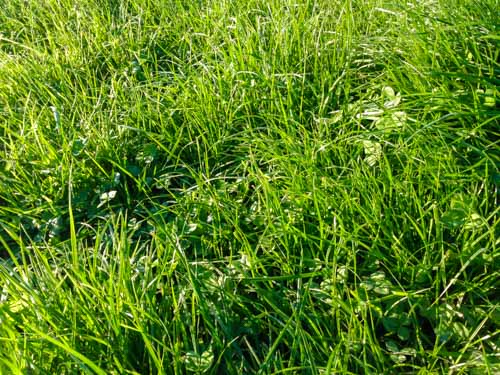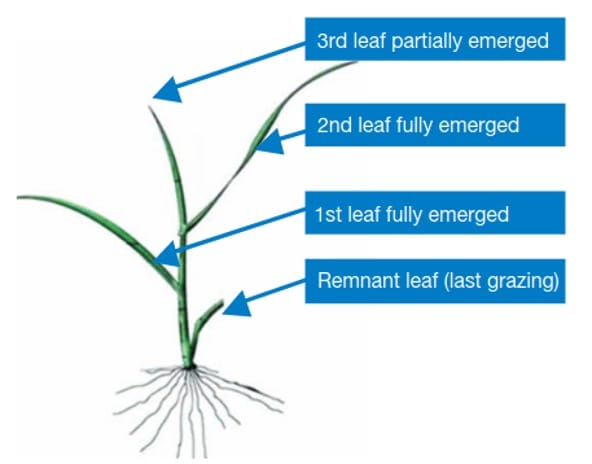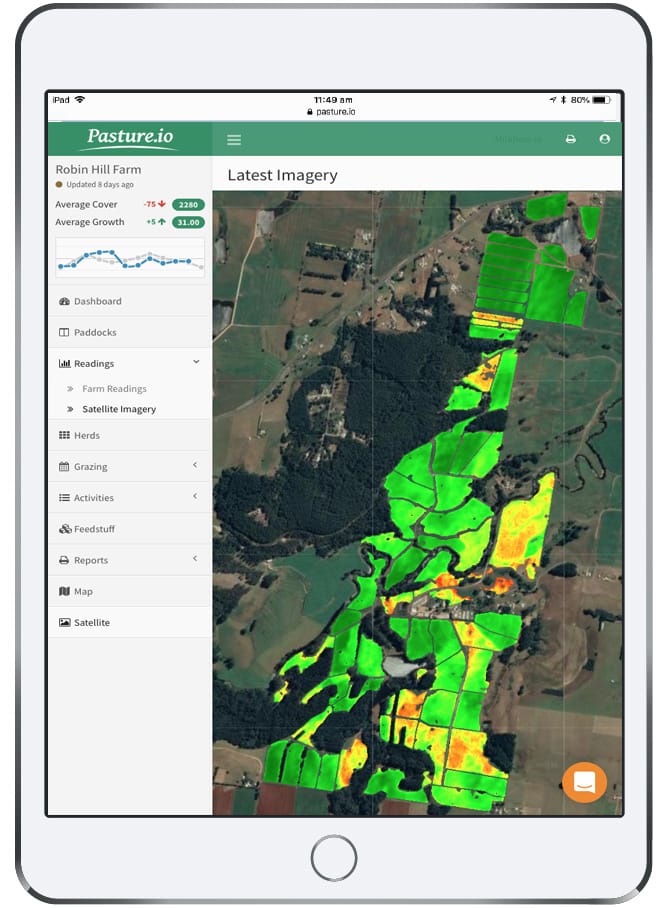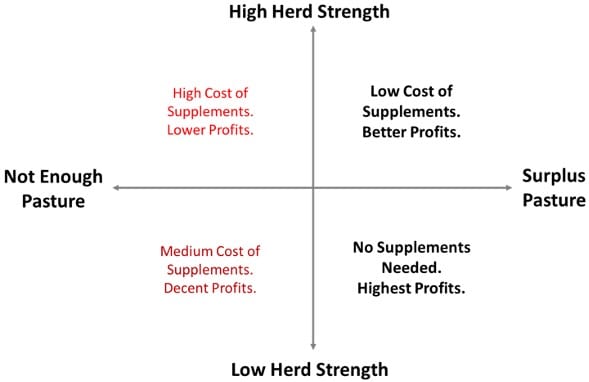As a progressive farmer you are looking for ways to improve farm productivity and profits with high performing ryegrass.
One way to do this effectively is to manage your pasture well. This alone can help you reduce supplement costs, increase farm productivity as well as earn better profits.
Identify your pasture management goals
Choose the right pasture species
Annual Ryegrass
Perennial Ryegrass
How to manage your grazing
Using the Ryegrass leaf stage approach
Choose your paddocks and measure pasture cover levels
Adjust supplementation based on herd needs

Identify your pasture management goals
Before we even talk about using ryegrass in your pasture, let us first discuss your pasture goals. What do you want to accomplish with your pasture?
Would you rather choose a minimal no-fuss pasture species over slightly reduced yields? Or would you put in extra effort to get optimal yields in terms of Kg DM/ ha? Or would you instead take a safe bet and choose a mid-path between both these approaches?
Based on your goals, you will have to make some tradeoffs. For most farmers, these tradeoffs will be in terms of how much pasture inputs you apply needed and the risks of not getting enough yield.
Choose the right pasture species
Ideally, your pasture goals and what tradeoffs you are willing to make, should inform your pasture species. Ryegrass is a low-risk, high-yield pasture species that is particularly well suited for the temperate climate of Southern Australia and New Zealand.
Your pasture goals and what tradeoffs you are willing to make, should inform your pasture species.
There are two main varieties of ryegrass to choose from, the annual variety (Lolium multiflorum Lam.) and the perennial variety (Lolium perenne L.).
Annual Ryegrass
The annual variety is also sometimes known as Italian ryegrass and is native to southern Europe. It is not a true annual and in some cool climate conditions it can survive up to five years.
That said, it is typically planted in autumn, to be grazed during winter, and then dies over the following summer. Annual ryegrass has two major advantages. Firstly, it produces high yields and maintains productivity until mid-summer. And secondly, it grows rapidly and is easy to establish.
However, these advantages also come with a few limitations. For instance, some Italian ryegrass varieties may not produce seed heads in the first year. This might increase your seeding costs. And when it finally starts seeding, it reduces the quality of dry matter. You can avoid this by planting later maturing varieties. But these seeds are not commonly available and you might find it difficult to procure them in time. And most importantly, it is not very resilient to heat and lack of moisture. So it is riskier.
Perennial Ryegrass
Perennial ryegrass (Lolium perenne L.) is also native to Europe. But also has origins in Asia and North Africa. Perennial ryegrass can typically survive for many years.
It has several distinct advantages. First, because of its nutritive value, perennial ryegrass is an excellent choice for pasturing cattle and sheep cows. Secondly, it adapts well to mild-temperate climates and can survive dry summers. And finally, it recovers rapidly after grazing and tillers extensively.
However, these advantages also come with a few trade-offs. To begin with, perennial ryegrass needs more care than other cool season grass species. It has lower herbage yields compared to annual ryegrass. It also drops in yield during summers. Some varieties may also be susceptible to crown rust.
How to manage your grazing
Using the Ryegrass leaf stage approach
For best results, graze a paddock of ryegrass based on its leaf stage. The leaf stage is nothing but the number of new leaves that have sprouted, since the last grazing. As shown in the below picture, you can easily count the number of leaves just by looking at individual tillers of ryegrass.
For fully grown leaves assign a leaf stage value of one. And for partly grown leaves give it a leaf stage value of half.
We don’t count remnant leaves as it doesn’t count as new growth. It was already part of the tiller even while being grazed. We assign values only to the new leaves that have emerged, because this indicates the tillers energy status and its ability to recover after grazing.
Let’s apply this leaf stage values to the below picture as an example. There is one remnant leaf, so we don’t count that. In addition to this, there are two fully formed leaves and a partly formed leaf. So the leaf stage of this particular example is two and a half.

For optimal results, you want to graze your ryegrass paddocks when it has a leaf stage value between two and three.
This will ensure optimal regrowth as well as a pasture with high quality nutrition.
You may also consider grazing a few days before the second new leaf emerges, when you are either running short stage of pasture or when you are moving into surplus.
It is best to avoid grazing after the paddocks reach a-leaf stage value of three or above. Otherwise, you lose out on feed quality as well as quantity, because older leaves start dying out beyond this stage.
Choose your paddocks and measure pasture cover levels
In addition to identifying leaf growth values, it is also important to identify which paddocks need to be grazed in what order based on its pasture cover levels.
Once the order of paddocks to be grazed is decided, the amount of feed available for the cows on each paddock needs to be assessed. To do this you can use various pasture measurement tools such as rising plate meters, C-Dax meters, drones or even satellite-based apps such as Pasture.io.

More often than not, measuring pasture cover levels accurately and periodically is the single biggest problem farmer’s face.
They might end up spending up to 5,000 dollars a year in labor costs alone. However, in recent times, modern pasture measurement services based on drone and satellite-based technologies are helping farmers get accurate pasture measurements in a cost-effective manner.
You must also take care to maintain post-grazing residual targets between four and six centimeters or in other words around 1,500 kg DM/ha. Periodic pasture measurements can help you achieve this.
Adjust supplementation based on herd needs
Your cost of supplements will depend on your herd strength and how much surplus pasture you have.
As shown in the below picture, you may have to use a lot of supplements if you have less pasture than what your herd needs.

On the other hand, you may need to use only an optimal level of supplements if you have low herd strength.
Similarly, when you have surplus pasture, you may need only very little or no supplements at all. This is the goal. Because lower supplements mean lower expenses and higher profits. This is also why it is important to use ryegrass in your pastures.
I hope you found this useful, if so please do share this with other farmers and if you have any questions, please let me know and I'll answer them below.
Until next time, Happy farming!
- The Dedicated Team of Pasture.io, 2020-02-19